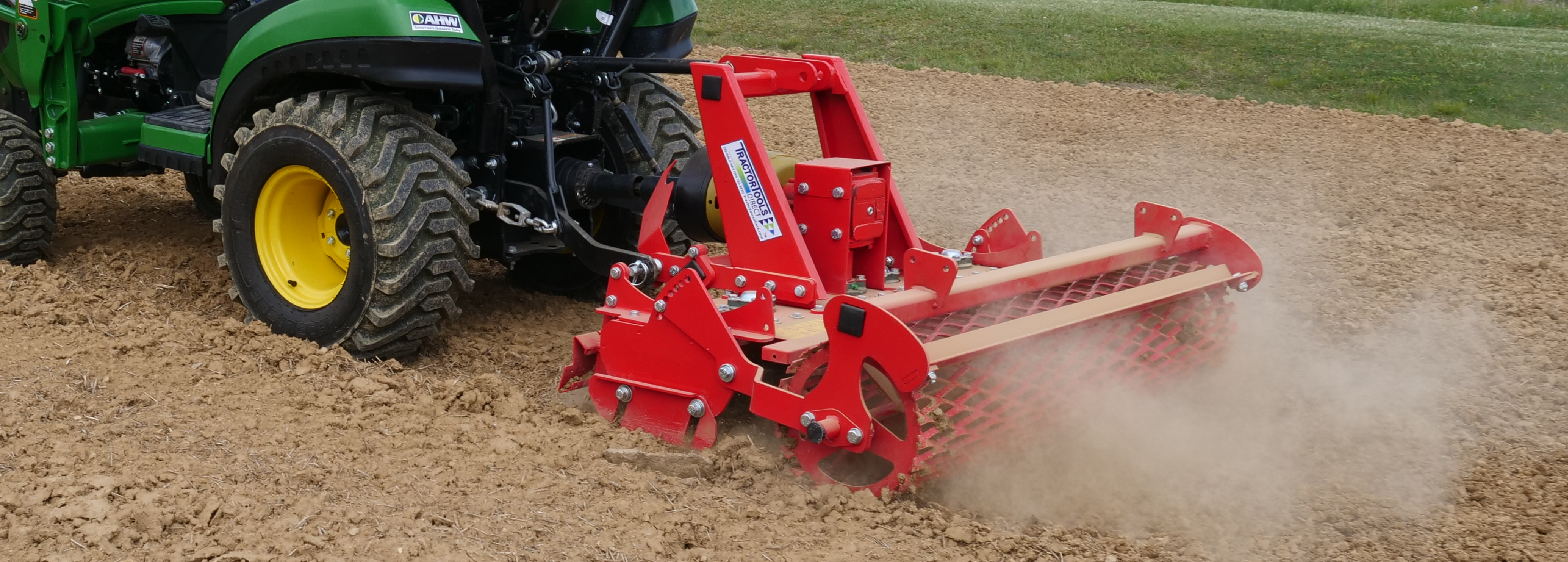The Advantages of Power Harrow Use on Small Farms and in Market Gardens for Long-Term Soil Health

In recent years, small-scale farmers and market gardeners have increasingly turned to power harrows as an essential tool for soil preparation and cultivation. A power harrow is a piece of machinery that uses rotating blades or tines to break up and aerate the soil, making it suitable for planting crops. While the benefits of using such equipment are clear in terms of efficiency and labor savings, let’s also consider how regular use of power harrows impacts long-term soil health, especially for those committed to sustainable farming practices.
What Is a Power Harrow?
A power harrow is a mechanized implement attached to a tractor that works by rotating a series of tines or blades through the soil. These blades break up compacted layers, mix organic material like crop residue into the soil, and create a finely tilled seedbed. Power harrows are particularly suited for small farms and market gardens, where space is limited, and precision and efficiency are key.
The use of power harrows is more gentle than traditional plowing, as it works the soil at a shallower depth, which can help preserve soil structure and reduce the risk of overworking the land. This makes it a popular choice for small-scale operations, where maintaining soil fertility and health over the long term is a priority.
Advantages of Power Harrows
Power harrows provide many advantages on small farms and in market gardens. First, they offer efficient soil preparation. Power harrows are faster and more efficient than hand labor, which is often essential in market gardens where time is of the essence. The ability to quickly prepare the soil allows for better crop rotation and the timely planting of successive crops.
Power harrows also allow for reduced soil compaction. Unlike traditional plows, which can cause compaction by turning the soil too deeply, power harrows typically work only the top few inches of soil. This reduces the risk of deep compaction and helps preserve the structure of the soil, which is critical for root growth, water infiltration, and overall soil health.
Power harrows are known for improving aeration. Their rotating tines create a looser, more aerated soil structure by breaking up clumps and incorporating organic matter like crop residues. This allows for better air flow in the soil, which improves the health of soil microorganisms and earthworms, both of which play crucial roles in nutrient cycling.
These machines also reduce erosion risk. Because power harrows work on the surface layers of the soil, they help minimize the disruption to deeper soil horizons, which can prevent erosion. In small market gardens, where erosion can be a significant concern, the more conservative use of power harrows can offer a safeguard against soil degradation.
Best Practices for Power Harrow Use on Small Farms
To maximize the benefits of power harrows while also maintaining long-term soil health, here are several best practices. First, try to avoid over–harrowing. Harrow the soil just as much as is necessary to achieve the desired seedbed condition. Incorporate mulching and cover cropping to maintain soil structure and organic matter.
Be sure to practice crop rotation. This is essential to maintaining soil health. By alternating crops with different nutrient needs, farmers can help break pest cycles, reduce soil depletion, and improve soil fertility.
Farmers and gardeners can also incorporate cover crops and organic matter. Growing cover crops that help improve soil structure will reduce the need for frequent tillage. Additionally, incorporating organic matter such as compost or manure will replenish nutrients and maintain healthy soil ecosystems.
When and where possible, consider incorporating no-till farming practices or reducing tillage depth to preserve the soil's natural structure and promote long-term health. Power harrows can be used in combination with no-till approaches to maintain soil health while optimizing productivity.
And possibly most importantly, be sure to monitor soil health regularly. Regular soil testing and monitoring can help ensure that the soil remains healthy over time. Keep an eye on soil structure, nutrient levels, and microbial activity to detect any early signs of degradation.
The Value of Power Harrows for Long-Term Soil Health
Power harrows can be an incredibly valuable tool for small-scale farms and market gardens, offering a quick and efficient means of preparing the soil for planting. However, it’s important to strike a balance between the benefits of mechanical cultivation and the long-term health of the soil. By adopting sustainable practices that minimize tillage, prioritize soil health, and replenish organic matter, farmers and gardeners can ensure that their use of power harrows enhances rather than depletes the land. Through mindful stewardship and an emphasis on regenerative practices, small-scale farmers can maintain productive, healthy soil for years to come.
Ibex Power Harrows are a wonderful choice for small farms and market gardens. With their advantage of horizontal, minimum tillage, and adjustable working depth, they provide perfect seedbed preparation and weed control. Add to that their versatility and availability in a variety of sizes, and you are sure to find the one that is a perfect fit for your operation.
For more information please visit our website or give us a call at 260-225-3429.
Recent Posts
-
How to Winterize Your Tractor: Essential Maintenance Tips to Protect Your Investment
Farm equipment is one of the most valuable investments a farmer can make. At Tractor Tools Direc …Dec 1st 2025 -
Farm Tax ID Explained: Benefits, Eligibility, and How to Apply
As the end of the financial year approaches, it's a great time for small farmer operators to rev …Nov 12th 2025 -
Rototillers vs. Power Harrows: Which Tool is Best for Your Soil?
Fall might seem like an odd time to talk about planting, but there really is no better time to t …Oct 27th 2025




